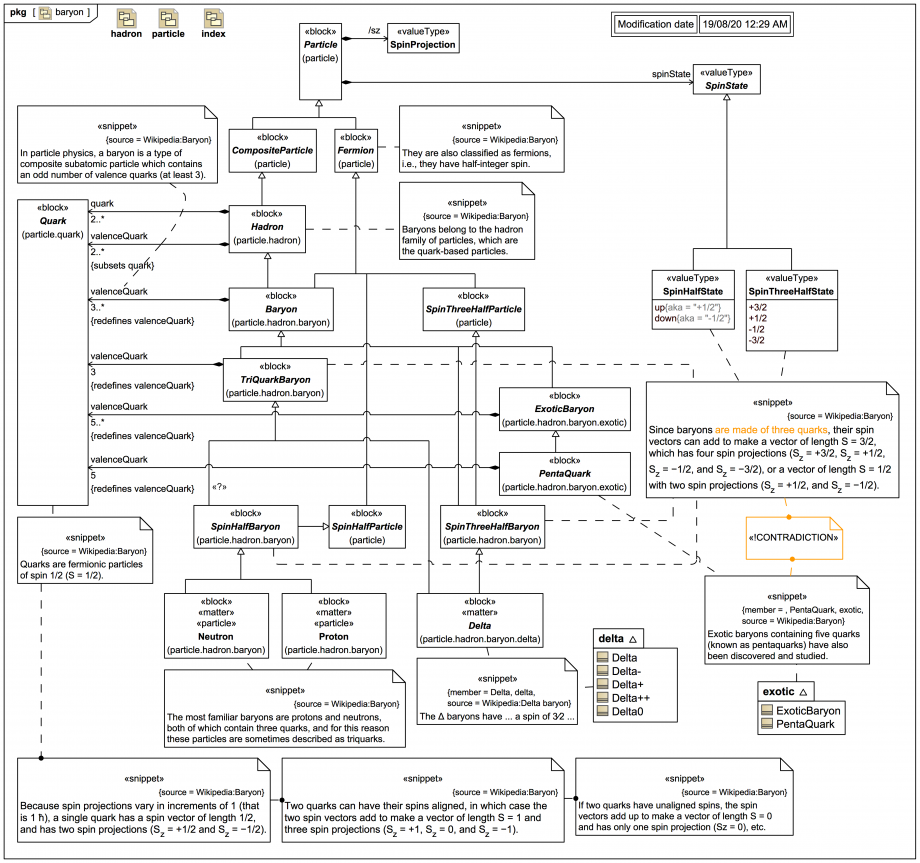Tags and keywords
One workaround is to use an editorial comment with the stereotype keyword «!CONTRADICTON» (where the «!...» is a Webel convention), with "anchors" to the two snippets that seems to contradict each other.
From the point of view of representing taxonomies and hierarchies in SysML baryons are a very interesting case study. Consider, for example, the Delta (of which there are 4 concrete kinds). On the one hand we can say it is a TriQuarkBaryon (in the sense used in the SysML model here, not just in the popular sense of neutrons and protons being "triquarks"). The Delta is also a SpinThreeHalfBaryon, which in turn is a SpinThreeHalfParticle (which knows about the SpinThreeHalfState enumeration value type).
Note how those different inheritance paths involve different aspects.
Now consider the PentaQuark. Wikipedia as of 2020 is still a bit all over the place concerning whether the existence of pentaquarks has been confirmed, but according to CERN as of about 2015 they definitely exist.
Can a PentaQuark be a spin-1/2 particle? No cheating now, we are playing the "Wikipedia as source" SysML Parsing Analysis game, not the "pluck the knowledge out of your head" game. Without an authoritative snippet (text extract) to answer it the model here deliberately does not make any unwarranted assumptions about it yet (but does safely redefine the multiplicity of valanceQuark to be [5] for PentaQuark).
Maybe one concrete kind of pentaquark is a SpinHalfBaryon, maybe another is a SpinThreeHalfBaryon; that aspect is "orthogonal" to the number of valence quarks any PentaQuark has. If one specific kind of PentaQuark turns out to be a SpinHalfBaryon the Generalization (with «?» previously applied) from SpinHalfBaryon to TriQuarkBaryon would turn out to be wrong.
You may be asking whether this growing, exploding zoo of baryons could not all be better handled using some degree of parametrisation. After all, if increasingly exotic baryons exist do we really want SpinFiveHalfBaryon, SpinSevenHalfBaryon and so on?
Certainly SpinHalfParticle and SpinThreeHalfParticle have such specific physics associated with them they are definitely worth having and inheriting from.
Another thing to consider is this; having a concrete SysML block for each kind of known or predicted baryon (and there are lots of them) gives you a place to document that baryon - including specific experimental data about each one.
(Apologies if your favourite Lamda, Sigma, Xi, or other baryon does not appear here.)


